|
Former Director of Heifer China
Dear Friends, I am sad to send this message out. Dr. Pu Jiabi, former Country Director for Heifer China, and IGA Board member, passed away peacefully last Saturday, June 4th, at 94. He was cremated, and his family held a brief funeral ceremony. I expressed our respect and made a memorial speech at the ceremony. Dr. Pu worked as a breeding expert in the Sichuan Provincial Bureau of Animal Husbandry in China for about 40 years. He made significant contributions to breeding and improving livestock and poultry in Sichuan. In 1984, Dr. Pu visited Heifer International as a Sichuan Provincial Bureau of Animal Husbandry delegation member. He then submitted some project proposals, of which three were approved for funding by Heifer.
0 Comments
Najmeh Kargar (1), Nader Papi (2), and Farhad Mirzaei (2) 1. Agricultural Research Education and Extension Organization (AREEO), Animal Science Research Department, Kerman Agricultural and Natural Resources Research and Education Center, AREEO, Kerman, Iran. 2. Agricultural Research Education and Extension Organization (AREEO), Animal Science Institute of Iran, Karaj. 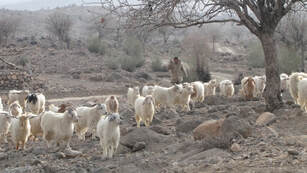 A flock of Raeini Cashmere goats A flock of Raeini Cashmere goats History of goat breeding in the province To know the history of raising Cashmere goats, one should refer to Kerman’s history of cashmere products. Raising Cashmere goats was earlier than the cashmere products. The shawl was one of the essential cashmere products in the past. The definition of shawl by Dehkhoda is cashmere or wool textiles woven in Iran, especially in the city of Kerman. Also, a shawl is defined by Moin: as a simple or patterned textile that is woven from cashmere or wool. For the first time in historical references (Georgie Zidane), the Kermani shawl is mentioned around 333AH and 944AD. Marco Polo refers to knitted products in Kerman in his travelogue. Telegrapher reported 15,000 shawls woven and many shawls production workshops in Kerman in 1879. During the reign of Fath-Ali Shah Qajar, the number of Cashmere goats grew in other areas of Iran, but the quality and quantity of cashmere production declined. Bastani Parizi believes that the production of desirable cashmere is due to the low rainfall in Kerman. The International Goat Association wishes to give special honor to Dr. Christopher D. Lu  Dr. Christopher D. Lu is a scholar and a retired tenured Professor of the University of Hawai’i-Hilo. He is a devoted member of IGA and served many years on the Board of Directors, Vice-President from 1996 to 2004, IGA’s President from 2004 to 2008, and Past-President from 2008 to 2012. He is also an active member of the IGA Advisory Board. As President of IGA, Dr. Lu strengthened general membership and grew our finances. He laid the foundation for our robust Regional Directors and Country Representatives system, expanded the IGA website and electronic newsletter. Dr. Lu and his wife, Hsin, established the C. W. Lu Young Scientist Award, given to IGA members who have demonstrated excellence in research in any area of goat science and have held their Ph.D. for a period not greater than ten years. Dr. Lu was the founding director of the American Institute for Goat Research in Oklahoma. He has published over 270 refereed journal articles, refereed conference papers, invited papers, invited presentations, book chapters, and books that relate to his interest in ruminant nutrition, international development, and education. His scholarly works contributed to advances in understanding nutrient requirements, nutritional physiology, and nutritional biochemistry in ruminants.  IGA is sad to announce the recent death of Dr. Canagasaby Devendra. He died peacefully on June 17, 2021 after a short illness in Kuala Lumpur, Malaysia with his wife by his side. He leaves behind his wife, son, daughter-in-law and two grandsons. Known to everyone by his last name, Devendra or Dev, he played an essential role in IGA’s development. He was one of the founders of IGA, an IGA Vice-President, and a member of the Board of Directors. In addition to his well-respected scientific research on all aspects of goat production, he was an outspoken advocate for environmentally sustainable livestock development that benefitted low-income families worldwide. In January 1982, during the 3rd International Conference on Goats, Devendra was a member of the International Goat Association planning meeting. This meeting was a select group of internationally recognized leaders in the goat world who developed the foundations of IGA and included Christian Gall, Pierre Morand-Fehr, Jean Boyazoglu, and George Haenlein. As a member of the first Board of Directors, Devendra helped establish IGA as an international entity and contributed to its development and success. He continued writing, teaching, mentoring, and publishing throughout his life and has over 19 books and approximately 496 mostly peer-reviewed publications and chapters in books. Recent additions are Goats: biology, production and development in Asia (2007), and Small farms in Asia: revitalizing agricultural growth, food security, and rural prosperity (2010). We are the heirs to Dev’s pioneering work, scientific rigor, and profound compassion that brought attention and respect to the goat sector. Recently, we received an email from his son, Akash Devendra, who said, “His work and the camaraderie of his colleagues around the world gave him so much satisfaction in life. My mum and I will have had the good fortune to meet many of you over the years and extend our very best wishes and warmest regards.” We hope you will share your memories (on the IGA Blog) (in the comments below) of his contributions to your professional and personal life as we mourn his passing. Rahman Rostamkhani (1), Seyyed Saeid Mousavi (2), Hossein Ghorbani (1), Seyyed Vahid Mortazavi (1), Mohammad Taghi Moslemioun (2), Mohammad Hossein Nemati (2), Hassan Mohammadi Nedjad (2), Nader Papi (3) and Farhad Mirzaei (3) (1) Animal Production Improvement Administration of Zanjan province. Agricultural Jihad Organization. Zanjan, Iran. (2) Animal Science Research Department. Zanjan Agricultural and Natural Recourses Research and Education Center. AREEO. Zanjan, Iran. (3) Agricultural Research Education and Extension Organization (AREEO), Animal Science Institute of Iran, Karaj. 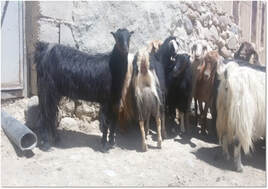 History of goat rearing in Zanjan province Archeological studies show the history of goat domestication dates to 7000 BC. Historical references also refer to Persia (Iran) as the land of origination of goat domestication. Since the earliest times, Iranians have reared goats for meat, milk, fiber, and skin supply. Currently, goat rearing has a notable role in Iranian nomadic and rural household’s life economy. The recent year’s goat keeping importance has been revealed much more because of climate changes, feed source limitation, and lack of relative advantage of pure breed farm animal production in Iran. Goat keeping has an essential role in meat and milk production in Zanjan province. Historically Name of Afshari goat is originated from the Afshar tribes who first reared this ecotype of goat in the region. Geographic distribution area Afshari goat population has been distributed in the different parts of the Zanjan province in about 20000 Km2.surface area, including highland altitudes and plains areas with other climatic conditions. Population Based on the current official data, the Afshari goat population is estimated at about 130,000 heads in the province. Rearing systems Goat keeping procedures are generally rural or semi-nomadic system. Goats are often reared together with sheep and in the grazing livestock act as a frontier animal or leadership of the flocks. Pure herds of goats are not usually seen among the local livestock. Job creation Among the farm animal rearing, goat keeping is a part of daily life of the rural and tribes because of their great interest in this occupation. They usually keep goats not only to improve their incomes but also for the natural compatibility and attractive appearance of their herds. The cultural, social, and economic relationship among nomadic and rural communities Afshari goats with 130,000 heads produce some 550 tons of meat and 2,000 tons of milk in the province annually. Milk, fiber, and meat of Afshari goat are used by the nomadic and rural, and also urban people. Goat keeping has an important role in rural and nomadic life economy because of the food source supply and earning incomes. Hence, Afshari goats have great economic importance for rural or nomadic households. Appearance features Few references indicate the phenotypic characteristics of Afshari goat among the goat sciences literature. In general, the dominant color of the coating fiber is pure black, but other colors are seen in the flocks. Both male and female goats are hornless. Bucks have a strong and muscular body, and because of the good capability of grazing in poor pastures or feeding low-quality forages and they can return good income for their owners. Does have good performance of milk production, daily milk yield ranges from 1.5-2.3 Kgs. Mature bucks weigh more than 60 kgs., which is a good potential for meat production. Export
Goat yields are generally consumed inside the province, and the exportation of the products is not performed. Items used for products Of the Afshari goat products, hair products can be mentioned. Hair fiber growth is about 25 cm/year, and each goat can produce some 400 grams of hair per year, which is used for preparing of handicrafts and traditional clothes in most villages. The skin is used in the leather industry. Milk is used for feeding kids, and the rest of it is used to prepare cheese, yogurt, whey, and some other local milk derivatives. Mature bucks weigh more than 60 kgs., which supply the local and urban residents’ meat needs. Measures for identifying and genetic improvement There is a decent rate of multiparity in Afshari goats, which can result in high performance and more economic animals, by performing of interbreeding selections or other livestock improvement programs. In 2007, an on-farm project plan entitled “An investigation on crossbreeding of the Sannen bucks with native black goat (Afshari does)” was carried by the Research Center for Agriculture and Natural Resources of Zanjan province. In these projects, the performance of first and second generation of crossbreds (F1 and F2) had a relatively good result, but in most cases, their adaptability was weak in the rural rearing condition. Suggestions for performance improvement As a national genetic resource, Afshari goats have valuable production performance and traits which has not been studied scientifically. For identification of the production performance of this ecotype, it is necessary to do comprehensive researches and studies.  As IGA continues to grow and strengthen, we want to remember some of the people who helped us become the globally respected organization that we are. Today, we highlight Dr. Canagasaby Devendra. Career Dr. Devendra earned a Bachelor of Agriculture Science degree while in New Zealand, a Master of Agriculture Science in Malaysia, and his Ph.D. and DSc degrees from the University of Nottingham in the United Kingdom. His specialization is in animal nutrition and animal production systems, central to which is integrated natural resource management and agricultural systems. He is an international tropical animal production specialist with experience spanning over thirty years in research and development initiatives. The following is an article by W. C. Foote written in 2002 and recently updated to provide IGA members with a better understanding of what the IGA is and who we are.
Abstract The International Goat Association (IGA) was organized on January 12, 1982 during the Third International Conference on Goats in Tucson, Arizona, USA. Approximately 160 persons from 42 countries attended the organization meetings. Organization was unanimously approved with Warren C. Foote as interim chairman and subsequently president and Kent Leach as secretary-treasurer. A board of directors was subsequently elected consisting of Jean G. Boyazoglu, C. Devendra, Christian Gall, George F. W. Haenlein, Peter Holst, Pierre Morand-Fehr, Maurice Shelton and Clair E. Terrill. IGA has continued to expand in its influence and service during its first twenty years. IGA is unique in providing sustained international focus on a single species of animals and promoting its usefulness for the good of humankind. It has succeeded through three primary objectives: (1) Fostering the use of goats to provide for the needs of humankind; (2) Encouraging research with and development of goats to increase their productivity and usefulness throughout the world; (3) Perpetuating the International Conferences on Goats. IGA has effectively encouraged and assisted the development of science and technology of goats and their application. IGA’s challenges in the future include to remain focused on its initial objectives; to maintain its place and role in international leadership; and to remain an independent but collaborative force in a world of shifting politics and economies, increasing numbers of GO’s and NGO’s and exploding technology – to continue to speak with singleness of purpose and direction. |
IGA Blog
The International Goat Association promotes goat research and development for the benefit of humankind, to alleviate poverty, to promote prosperity and to improve the quality of life. Archives
May 2024
Categories
All
|
|
International Goat Association
2516 Millbrook Rd., Little Rock, AR72227 USA email: [email protected] -454-1641 |
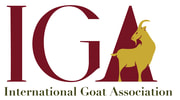
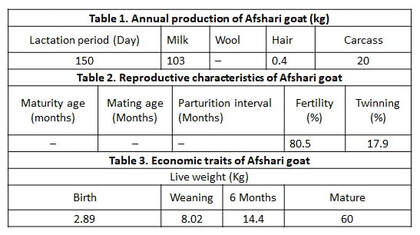

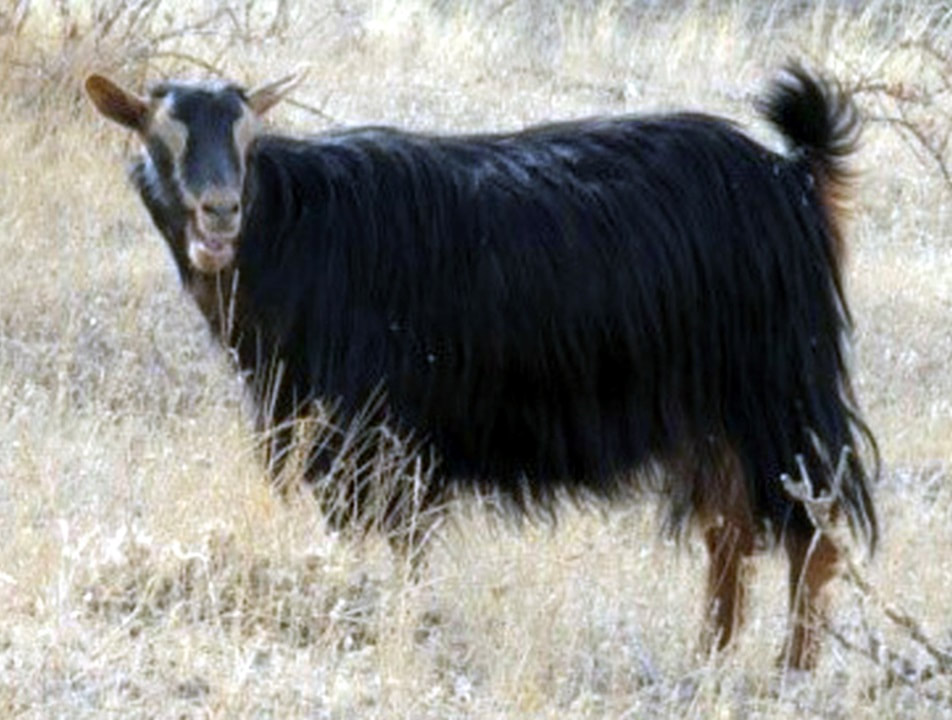
 RSS Feed
RSS Feed